CNN
—
About 2,100 Afghan refugees remain held in a sprawling compound in the United Arab Emirates more than 18 months after they were evacuated from Afghanistan largely by private groups working with the State Department.
They are what’s left of as many as 20,000 Afghans who were hastily relocated to the camp during the chaotic weeks surrounding the US withdrawal after Kabul fell to the Taliban in August 2021. Several thousand were brought there by the State Department directly from Kabul and have since been relocated to the US or Canada.
But thousands more, including those still stuck in the UAE, were evacuated weeks later, and sometimes from hundreds of miles away from Kabul, by private groups working to get as many out of Afghanistan as possible.
Sources familiar with the matter told CNN that the private evacuation efforts, though well-intentioned, contributed at times to an already chaotic situation – though they also say that the frenzy of the withdrawal created unclear communication and expectations.
Consequently, thousands of Afghans evacuated by private groups were left in a legal limbo with seemingly no clear path to the US – or anywhere else. And though the effort to resettle them has picked up in recent months, refugees inside the compound known as Emirates Humanitarian City, or EHC, are restless after almost two years of waiting inside a camp they are barred from leaving.
Without a visa, they’re not allowed inside the country.
When they first arrived in the UAE in August 2021, Afghan evacuees were housed across dozens of buildings in the gated compound. Afghans were separated in rooms with their families across multi-level buildings divided by a common outdoor space.
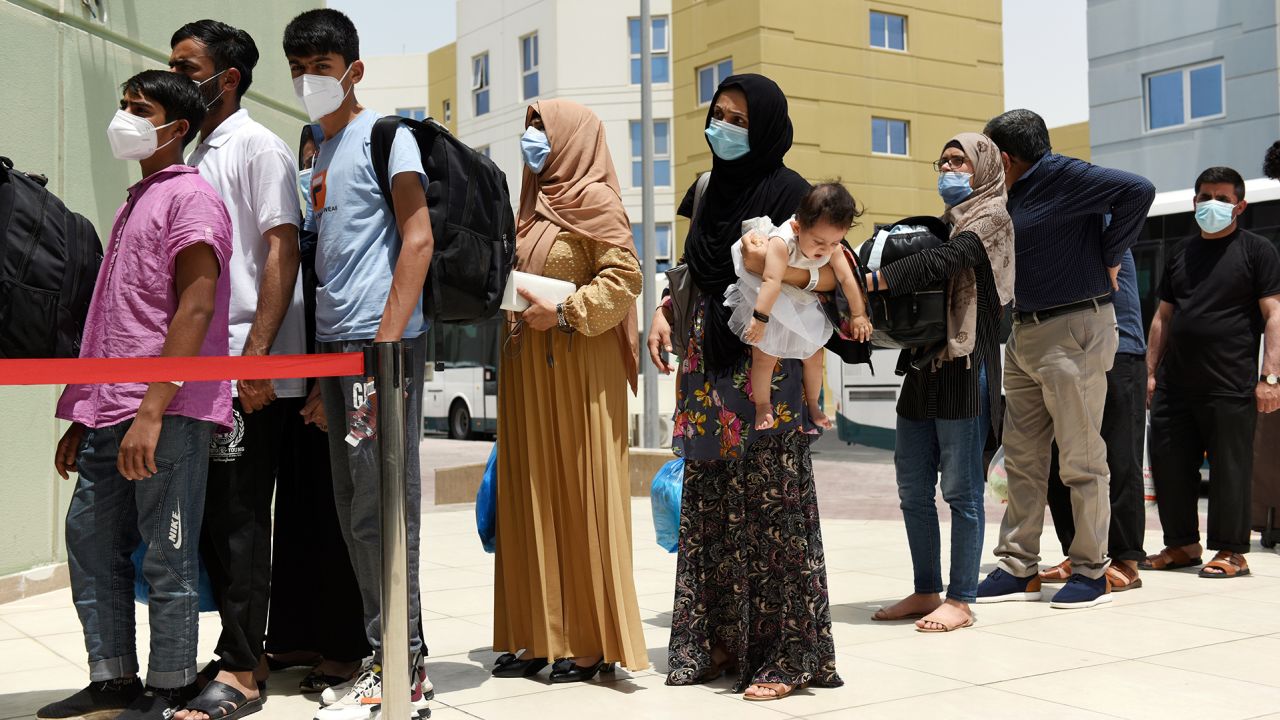
They were supposed to be there for a few days. But that’s now approaching two years for the more than 2,000 people who remain there. The State Department says it continues to process refugees out of EHC “on an ongoing basis.” One American Marine veteran closely involved said that a family or two leave each week, bound mostly for the US and Canada, as well as Australia, with some scattered across Europe.
At that pace it could still take more than a year to empty out the entire population of evacuees who remain at the compound.
Their plight has gained recent attention from human rights groups, who say the refugees are being held arbitrarily by the UAE and have been subject to a host of abuses, including poor medical care and being held in “prison-like” conditions.
A report put out by Human Rights Watch in March said Afghan asylum seekers have been “locked up for over 15 months in cramped, miserable conditions with no hope of progress on their cases” and are “facing further trauma now, after spending well over a year in limbo.”
In a statement to CNN, a UAE official said the refugees at EHC have “received a comprehensive range of high-quality housing, sanitation, health, clinical, counseling, education, and food services to ensure their welfare.”
The official said the UAE “continues to do everything it can to bring this extraordinary exercise in humanitarian resettlement to a satisfactory conclusion. We understand that there are frustrations and this has taken longer than intended to complete.”
“The UAE remains committed to this ongoing cooperation with the US and other international partners to ensure that Afghan evacuees can live in safety, security, and dignity,” the official added.
Allegations similar to those raised by the HRW report were described in an appeal to the United Nations submitted last fall by an independent American attorney, who alleged “widespread human rights abuses,” including inadequate health and mental health care, “constant” surveillance and “restricted access” to government officials working their cases.
In a statement to CNN, Mara Tekach, State Department coordinator for Afghan relocation efforts, said that while the department is aware of the Human Rights Watch report, the US government “is not aware of any verified allegations of human rights violations at EHC.”
CNN has not independently verified those allegations.
One refugee still stuck at EHC who spoke to CNN described extreme frustration over a seemingly hopeless situation. The man, who spoke on condition of anonymity out of safety concerns, said he worries about the effect the ordeal is having on his young daughter.
“My daughter, from months ago until now, sometime when she starts talking, I can feel the pain in her voice,” he said.
The man showed CNN what appeared to be documentation that he was recommended for a Special Immigrant Visa by a US contractor with whom he worked in Afghanistan for almost two years. It was unclear whether that documentation is sufficient for what the State Department has required. He told CNN his daughter is growing anxious to leave.
“She says, ‘You have [taken] me somewhere that I cannot see anywhere, I cannot go outside,’” the man said. “She’s asking me every time, frequently, ‘When are we going to get out of here?’”
During the chaotic weeks of the US withdrawal from Afghanistan in 2021, thousands of American military veterans rushed to help evacuate as many Afghans as possible.
Among them was US Marine veteran Pete Lucier, who worked with a coalition of veterans’ groups known collectively as the #AfghanEvac coalition. Lucier said he is proud of much of the work that veteran and civilian volunteers did in helping Afghans flee the Taliban, which has since reinstated many of the draconian laws it had in place before the US and allied forces invaded after 9/11.
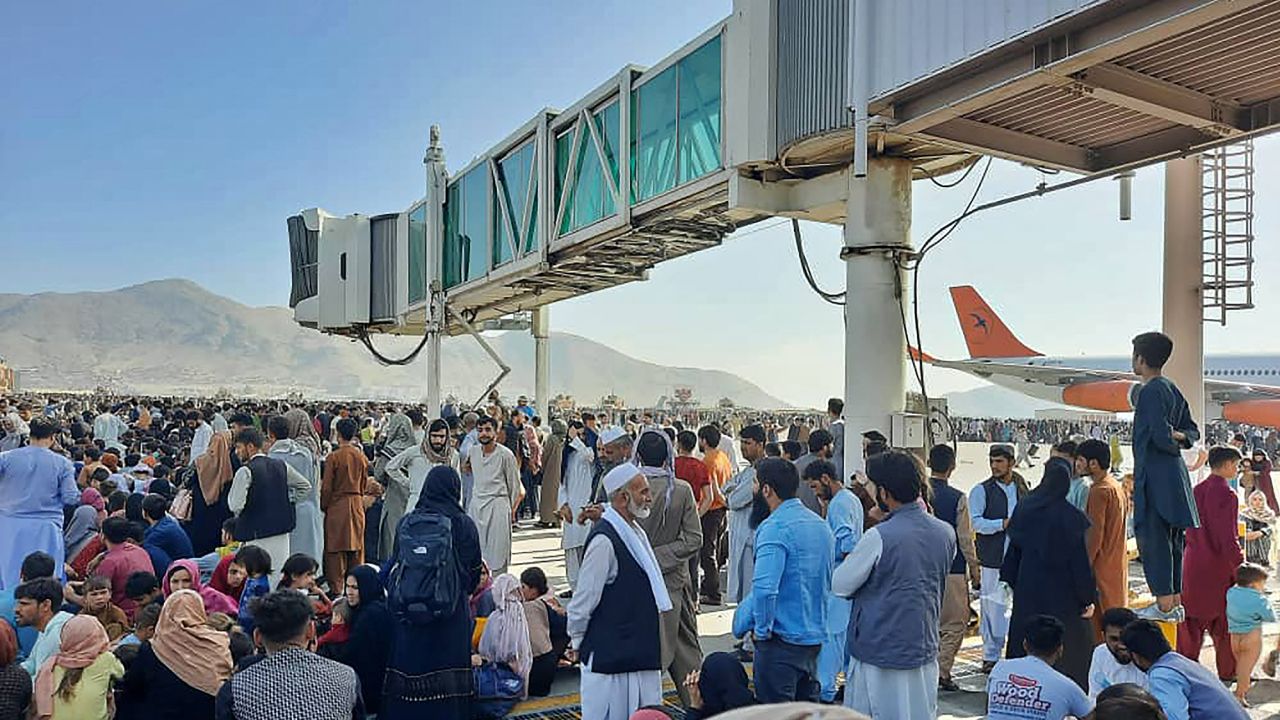
Still, Lucier admitted there have been shortcomings, telling CNN that even well-intentioned veterans’ groups and individuals ended up “sometimes, unfortunately, making things worse for vulnerable and at-risk people.”
Many of the individuals involved in evacuating Afghans had a “lack of familiarity with international law and the requirements of international travel,” Lucier said. “Broadly, I think EHC represents and embodies many of those challenges.”
Dina Haynes, an international human rights lawyer and a professor at New England Law school in Boston, echoed those thoughts, saying that what has happened at EHC is “not a surprise at all to anybody who has paid attention” to the US immigration system.
“The only people that it was a surprise to were those new people that showed up thinking that they could fly people out and land them somewhere and get the US government to help,” Haynes said.
EHC is one of a few locations around the world where evacuated Afghans are still waiting to be processed for visas to the US or elsewhere. There are Afghans in Albania and Pakistan who were relocated there by private groups, as well as Afghans who were evacuated by the US government and are still being processed at Camp As-Sayliyah in Doha, Qatar, according to the State Department.
Operated and funded by the UAE government, the EHC compound was first built in Abu Dhabi’s industrial Mussafah area to receive quarantine evacuees stranded in China following the outbreak of Covid-19 in 2020. After the US withdrawal from Afghanistan, thousands were evacuated to the compound as part of a wider regional humanitarian call to assist.
That was in part due to an agreement made in August 2021 between UAE officials and Joseph Robert III, a former US Marine and son of a wealthy real estate investor with connections in the country.
Robert’s group, the Black Feather Foundation, is among the roughly 200 nonprofits that are part of the #AfghanEvac coalition. Robert told CNN that relationships with UAE officials who were close with his late father helped secure the agreement to bring Afghans to UAE, sealed by a memorandum of understanding, which, according to Robert, stated that the UAE would receive and temporarily house Afghan refugees until they were able to move on to a third country.
The EHC compound was not specifically part of the agreement, Robert told CNN, but was chosen by the UAE because of its capacity.
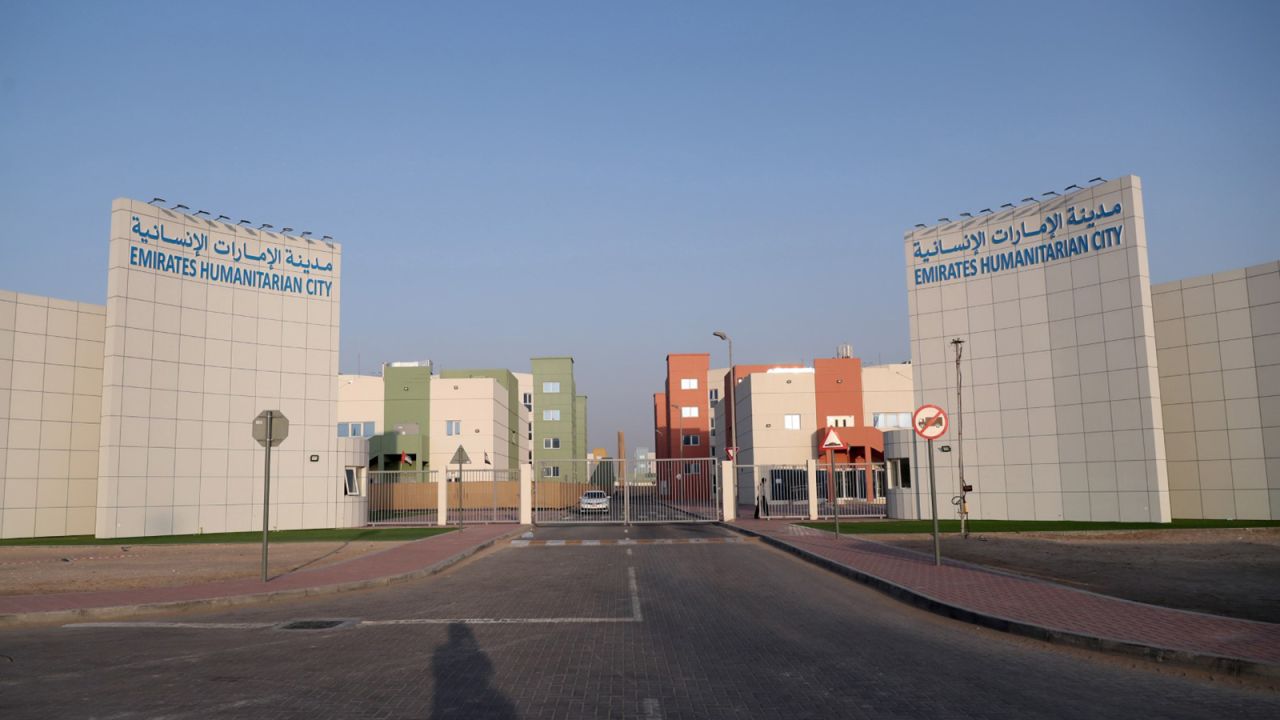
CNN visited the compound in August 2021, during the first days when Afghans were arriving. Afghans awaiting security and medical screenings were kept in assigned rooms until they were called for processing.
UAE officials and US embassy personnel were present at the main center at EHC, where dozens of Afghan men and women sat awaiting information on their next destination. It was not immediately clear who was processing information from the evacuees.
Robert said he has seen no signs of the alleged abuse taking place at EHC, which, he said, he visits every few weeks. He blames the US for not swiftly processing people out of EHC despite originally taking advantage of the extra hands that brought them there.
“The US government was using us at every turn when it benefited them,” Robert said. “And then when it came time to do the work on the back end, to process them out, they tried to leave us high and dry.”
Before going to Afghanistan in August 2021, Robert said he first flew to the UAE, where he had several meetings with officials about lining up commitments to take in refugees, as well as provide planes. When he finally landed at the Kabul airport in Afghanistan on August 20, 2021, things began to change immediately.
“It became just an on-the-fly, ad hoc assistance operation,” Robert said, adding that, suddenly, “our planes were being loaded with just people from the airport that the US would have evacuated.”
Afghan refugees arrived at EHC in three distinct groups. The first two groups were evacuated from the Hamid Karzai International Airport in Kabul in August 2021 by both the State Department and private groups working independently. The third group of Afghans were brought to EHC over the next two months by private groups, including Robert’s Black Feather Foundation, from Mazar-i-Sharif, a city roughly 260 miles from Kabul.
The EHC resident who spoke to CNN said he was flown out of Mazar-i-Sharif with his family after attempting to get through crowds of people at the Kabul airport during the evacuation in August 2021. Despite concerns about traveling from Kabul, especially with the possibility of running into the Taliban on the way, the resident said he thought it might his best chance “to get myself and my family out of the danger zone.”
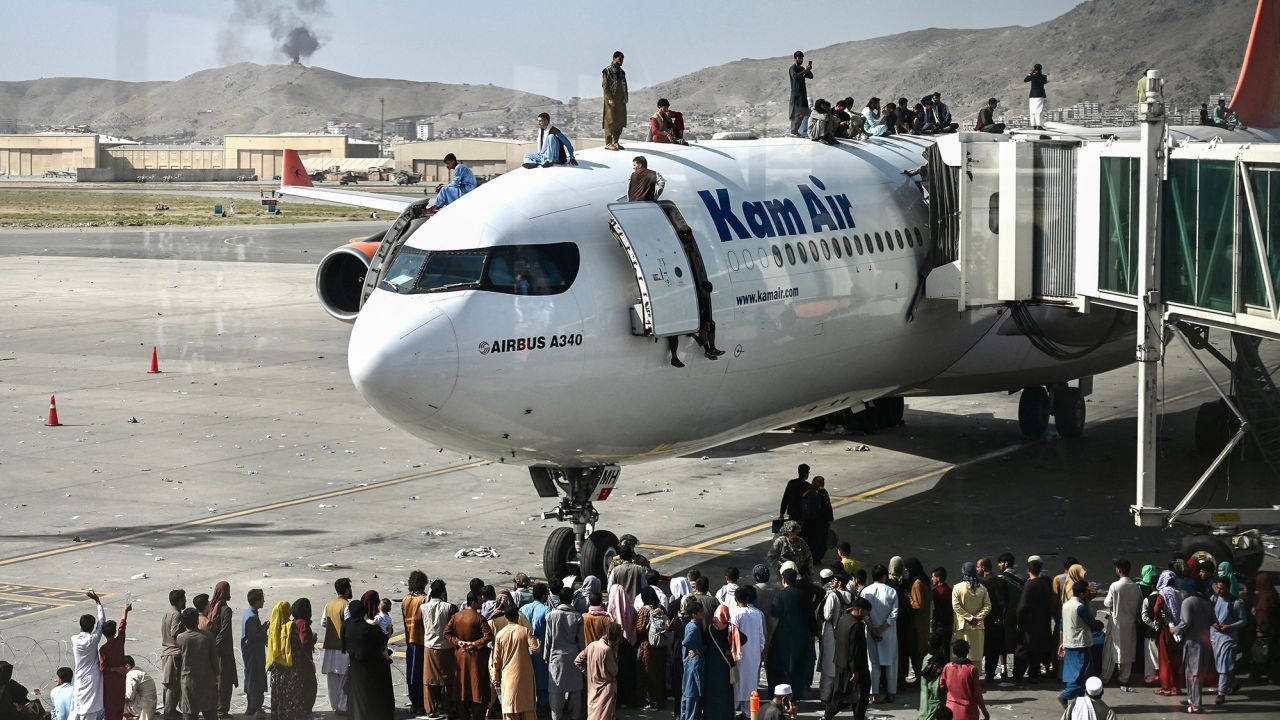
Robert told CNN the manifests for those flights were submitted by other organizations either directly to him or through other members of his team. Robert said he then submitted the manifests to the UAE government, which ran them through its own security systems.
It is almost entirely this group of people – those evacuated after August 2021 – that remains stuck at EHC, both the State Department and Robert said. In her responses to CNN, Tekach said the State Department “had limited information” about refugees who came on those separate flights. She also emphasized that that the place where people were evacuated from “is not a determining factor as to whether” they qualify for relocation and resettlement.
Toward the end of October 2021, Robert said it was clear to him that the State Department was “not going to continue processing” any more people brought to the UAE since the evacuation had ended.
“That’s where things with State Department started to unravel,” he said. “They processed only those that came on their aircraft, not even the ones that came on our aircraft alongside theirs during the [noncombatant evacuation]. As one State Department official told me, ‘Not our plane, not our problem.’”
Tekach told CNN that the State Department paused processing in November 2021 “in support of US public health priorities” and began relocating individuals in March 2022.
Still, Lucier told CNN that the US government and State Department likely were not clear enough in their communication about what private organizations could or could not do, leading to much of the confusion and at-times chaotic interference that occurred.
Robert expressed frustration over security concerns the State Department has raised about the Afghans at EHC, saying that for the most part the evacuees are “able to provide everything they needed” in terms of paperwork and documents, including reference letters from US employers while in Afghanistan.
While he acknowledged that there were shortcomings and mistakes made in the broader evacuation effort by private groups, Robert also said that was in part due to a “US government plan that was nonexistent.”
All in all, Robert said volunteers were still able to evacuate “tens of thousands of individuals, despite the US government’s inability to appropriately evacuate them in the first place.”
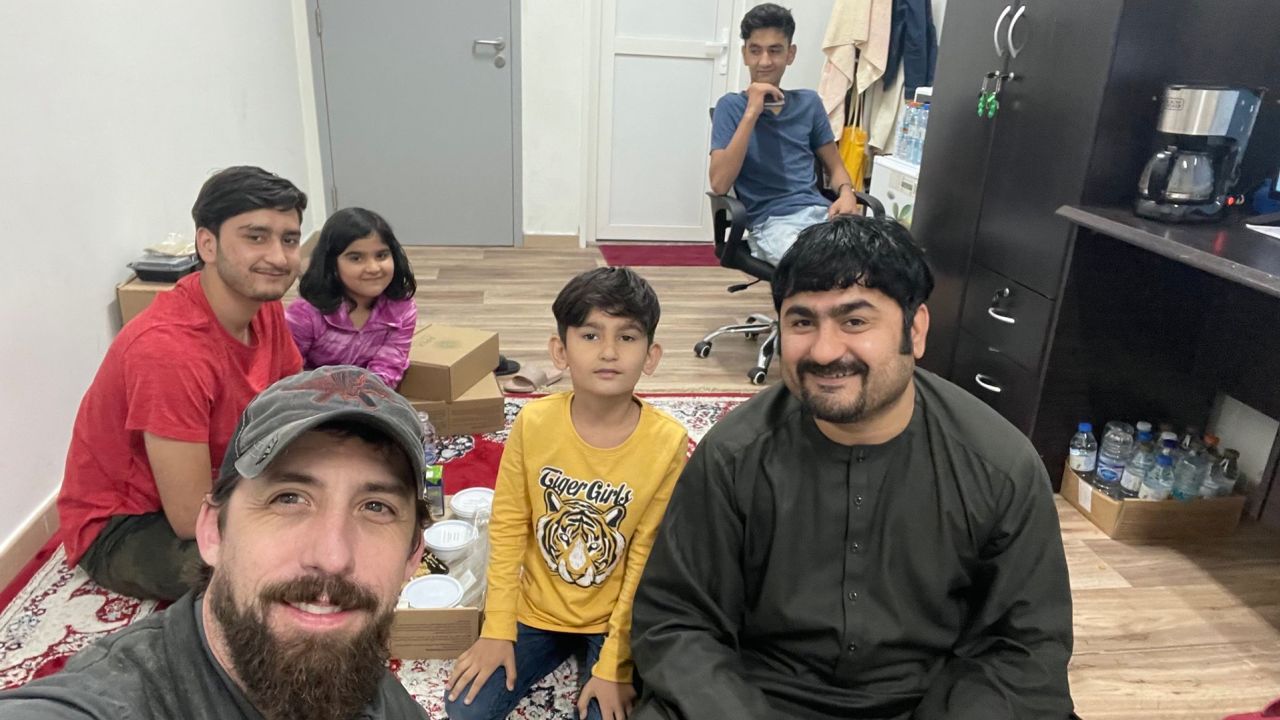
Asked how many State Department officials have access to EHC and how frequently they are at the compound working to process people out, the State Deaprtment’s Tekach said US officials have access to the compound “for a number of purposes, including gathering information to work on case processing and to support the well-being of the Afghan population at the facility.”
Robert said that over the past six months, an average of three to five State Department personnel have come to EHC twice a week. After early frictions, Robert said his relationship with US government personnel who deal with EHC is “in a much better place now.”
Despite the delays, Robert said they’re slowly making progress in resettling the Afghans still at EHC.
“Having 20,000 people pass through the walls of EHC, and we’re down to the last 2,000 – that’s a rather remarkable effort, although things didn’t go as smoothly as we’d planned or hoped,” he said.
“Even though everyone wants it to be faster, things are moving at a rather steady and consistent pace, and everyone’s still actively doing everything they can to find suitable pathways for people and accommodate families, and find other opportunities if a previous one falls through. Everyone is working tremendously hard to do what is right by these people,” Robert said.
As the US and others work to process Afghans out, Human Rights Watch is still trying to bring attention to their plight.
“They’re still in this facility, which was never designed to hold people for this long,” said Joey Shea, the lead researcher on HRW’s recent report. “And they’ve been effectively imprisoned after an extremely traumatic experience of fleeing a Taliban takeover.”
Shea said the clearest solution is through the US government.
“There just needs to be more resources put by the US government to make sure that these asylum and humanitarian parole and other applications are processed quickly,” she said.
At EHC, the current resident who spoke to CNN described how happy he was to have been evacuated from Afghanistan in 2021. Aside from marrying “the love of my life” and having children, he said that leaving Afghanistan was “the best day of my life.”
“When the plane took off, I couldn’t fit in my own skin because of the happiness that I had,” he said emotionally. “This is a new life that I began to live with my family. I was happy and proud I could do something for my wife, my kids.”
The recommendation letter he received from his US employer says he is “completely trustworthy, intelligent, and a faithful employee” and the “kind of person who will make a valuable contribution and service to the US, if allowed to immigrate.”
But the longer he and his family languish at EHC, he said, the harder it is to explain his work with the US.
“‘What will happen to us? Why are we abandoned by the US?’” he said his wife asks him. “My wife tells me that maybe it was not right that you worked for the US government.”

